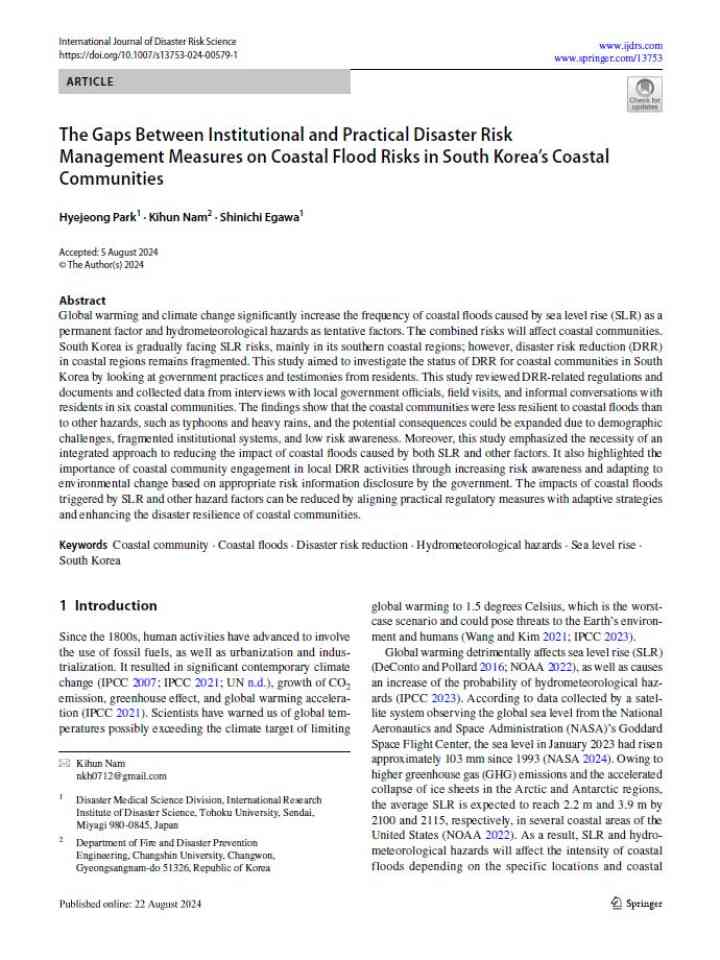The gaps between institutional and practical disaster risk management measures on coastal flood risks in South Korea’s coastal communities
This study aimed to investigate the status of disaster risk reduction for coastal communities in South Korea by looking at government practices and testimonies from residents. This study reviewed DRR-related regulations and documents and collected data from interviews with local government officials, field visits, and informal conversations with residents in six coastal communities. The findings show that the coastal communities were less resilient to coastal floods than to other hazards, such as typhoons and heavy rains, and the potential consequences could be expanded due to demographic challenges, fragmented institutional systems, and low risk awareness.
Moreover, this study emphasized the necessity of an integrated approach to reducing the impact of coastal floods caused by both SLR and other factors. It also highlighted the importance of coastal community engagement in local DRR activities through increasing risk awareness and adapting to environmental change based on appropriate risk information disclosure by the government. The impacts of coastal floods triggered by SLR and other hazard factors can be reduced by aligning practical regulatory measures with adaptive strategies and enhancing the disaster resilience of coastal communities.
Explore further

